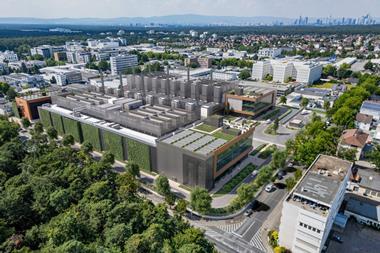The 190 cyclists who made up this year’s Legal & General charity bike ride from London to Cannes all made it to MIPIM on time. But elsewhere discussions among institutional investors often revolved around what has become one of the most ubiquitous phrases in the industry: ‘late in the cycle’.
A correction in the real estate market seems long overdue, but the consensus is that years of quantitative easing and low interest rates have postponed it. It has meant that every year, attendees at MIPIM – always a useful barometer of the market – ponder question: how long will this cycle last?
With the 10-year anniversary of Lehman Brothers’ demise only six months away, investors are beginning to wonder whether the cycle actually exists anymore – or whether we have entered a sort of indefinite plateau.
This sort of thinking, of course, is dangerous. Assuming the market will never crash is good way to tempt fate.
But most of the signs point to ongoing stability. Concerted global economic growth could well fuel real estate markets and mitigate the negative effects of future interest rates.
Then there is the often-talked-about “wall of capital”, on which the recent global real estate recovery has been built. It looks like it will hold firm.
Cushman & Wakefield suggested that last year outstripped 2016, generating $1.62trn of global real estate transactions versus $1.43trn.
Asian investors were the biggest buyers last year, and while Chinese capital is expected to be in less abundance, the market is still waiting a big entrance: Japan. The country’s public pension funds are returning to the asset class, and the biggest – Government Pension Investment Fund (GPIF) – is able to move markets.
But this still leaves investors with the challenge of continuing to invest capital in an ever-expensive asset class. The temptation is always to take on more risk to match the returns of the recent past.
Another option is to take a sideways step – into alternative, specialist sectors, such as hotels, logistics, student housing, healthcare and more traditional housing. This approach can sometimes provide better yields, but also more importantly a risk profile underpinned by secular trends, like demographics, and one less tied to economic cycles.
Nearly all conversations with major investment houses involved talk of alternative sectors and residential markets – resonating with the latest edition of IPE Real Assets which focuses on the importance of demographics and the growing appeal of the sector. Some are looking to launch pan-European residential strategies.
Commerz Real, for example, said it was looking to launch successors to its debut institutional student housing and hotel funds. Johannes Anschott, member of the management board, at the German company said niche real estate strategies offered “better opportunities for institutional investors” at this stage in the cycle.
CBRE Global Investors, which completed €12.5bn of transactions in EMEA last year, said it already had €1.8bn of acquisitions agreed to be closed this year. Residential and hospitality made up 15% of last year’s volume, showing the growing importance of what was once considered a niche activity.
John Mulqueen, head of transactions for the region, said its investors were increasingly asking CBRE Global Investors to source residential investments.
Allianz Real Estate, meanwhile, hit a personal record when it made €8.9bn in new investments in 2017. The real estate arm of the German insurer now has €56bn of assets, but is targeting €75bn by 2020. Alexander Gebauer, CEO for Western Europe, said Allianz Real Estate was looking to invest more in – among other sectors – residential.












